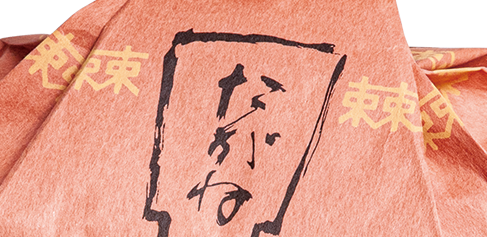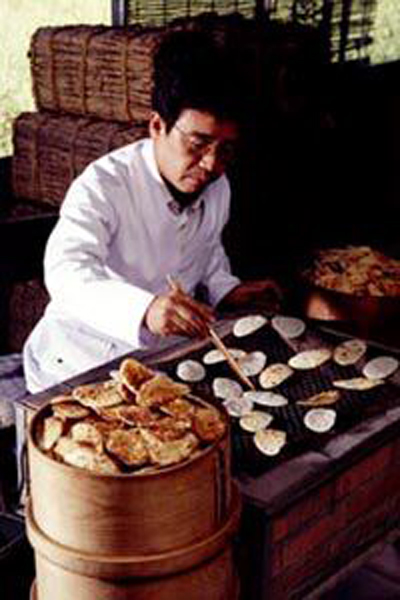Taganeya
For Taganeya, it all started on May 5, 1872, when Hamakichi, a resident of Hiraga Village in the Kuwana District, opened a confectionery shop under the name of Hirahama (Hira from Hiraga and Hama from Hamakichi) near Kuwana Castle.
Hamakichi’s delicious, handmade Tagane crackers were sold in paper bags. It is said that using paper bags for small purchases that only numbered three to five crackers was rare at the time. These crackers eventually gained popularity as Hirahama’s Tagane among the women of the castle town.
We have since been operating under the name of Taganeya, and are currently in the fifth generation.


Tagane
Tagane rice crackers offer the rice’s grainy texture and taste of flavorful tamari soy sauce
We think that Kuwana is the only place that sells tamari soy sauce rice crackers called Tagane.
According to our elders, this comes from bygone days of Rakuoko (Edo period), when sliced mochi made of both glutinous and non-glutinous rice was dipped in tamari soy sauce and sold as the inn town’s specialty to travelers that came in and out of the town. Somewhere along the line, they say, this specialty turned into “kakimochi,” or rice crackers.
We continue to grill our crackers over charcoal one by one at the store, just like the old days.
Our careful selection of ingredients goes without saying. As for their shape, in addition to the traditional oval-shaped Atsuyaki (“thick bake”), we also make comb-shaped Usuyaki (“thin bake”) as a snack to go with sake and Western wines alike.
Their rustic appearance and simple yet refined chargrilled flavors have earned them a great reputation as heartfelt items, and they are widely used as a gift, among other uses.
Reference
In Dr. Fumihiko Otsuki’s dictionary Daigenkai, Tagane (束) is defined as “shitogi” and “shinko-mochi”. Shitogi here is the name of mochi offered to gods, and what was formerly egg-shaped later became oval-shaped, according to the dictionary Kojien.
Before then, the ears of rice were offered to gods as they were in harvested bundles. The meaning of Tagane may have derived from a number of factors, such as the way the ancient economy always calculated volume by counting the number of bundles (束, same kanji as that for Tagane) of rice ears.


Final Note
The rustic taste evokes the scent of our distant ancestors’ lives. In a sense, the desire to preserve the often-forgotten rustiness may be a kind of nostalgia that is felt by those that have come after the ancestors.
I find unceasing purposefulness and joy in this humble business of
Taganeya Owner
